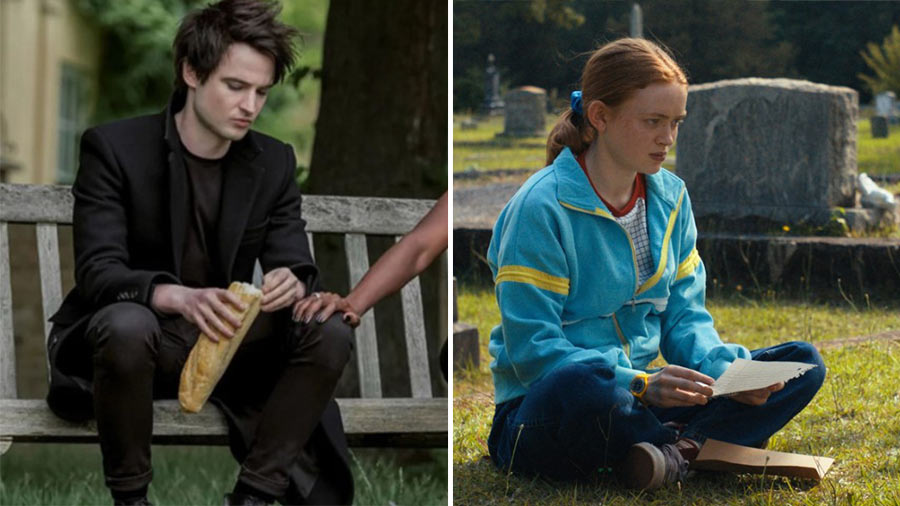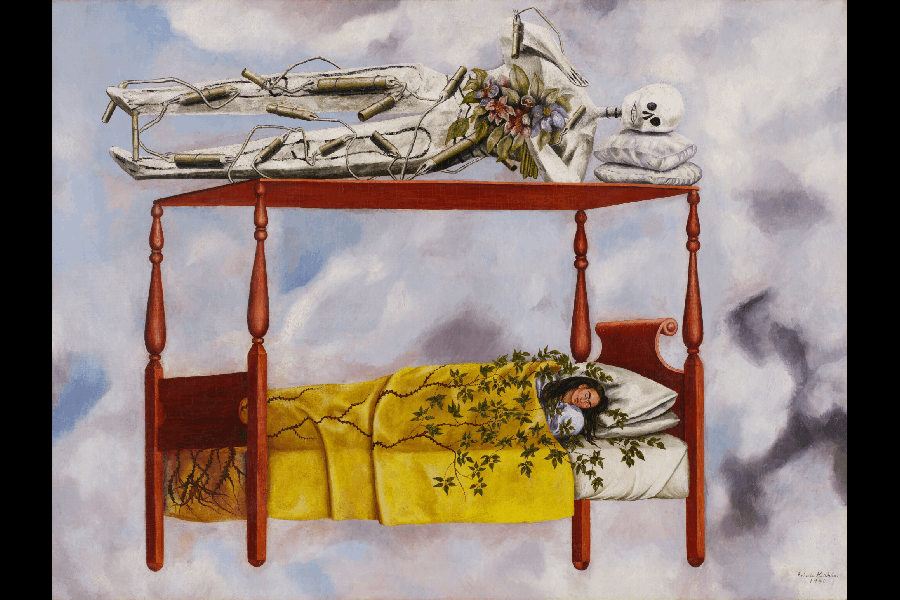Fantasy, as a genre, is a powerful unifier. It exposes the readers and viewers to the most alien of worlds and beings, yet somehow manages to make them deeply personal and lived. These stories allow us to take a step away from reality, to externalise our innermost emotions into angels, monsters, demons and myths, and better understand ourselves.
Two of Netflix’s recent shows have been able to do just that. The Dear Billy episode in Stranger Things and The Sound of Her Wings episode in The Sandman both explore death, although quite different in very different contexts. Their myths are different and so are their individual worlds. Both fantasy, but with vastly different sub-genres.
Stranger Things: Trauma and Survival
Stranger Things rose to fame in 2016 when Duffer Brothers’ homage to Steven Spielberg’s early science-fiction work, with a strong narrative of a group of teenagers trying to find their missing friend, hit the Netflix screen. Since then, the popularity of the show has grown, and so have their characters in the subsequent seasons. Max, who’s the heart of Season 4, is one of them.
Season 4 starts off with Max’s survivor’s guilt, after having watched her abusive step-brother, Billy, get killed at the end of Season 3. She is left behind with conflicting emotions. She did want to get rid of Billy and live life on her own terms but never at the cost of a gruesome death. Max carries the trauma with her to Season 4, self-isolating from her school friends and family, including her now ex-boyfriend, Lucas. Her only source of externalisation is her school therapist who she also visits very reluctantly.
A new monster -- Vecna -- is in town. His targets are very specific — possess the people suffering from a deep sense of guilt, isolate them and kill them. The first three episodes of Season 4 show us the first two deaths (in a very graphic and horrific way). When we learn that Max has also been possessed and doesn’t have much time left before she eventually also becomes a prey to Vecna, Max writes a series of farewell letters — to her friends, family and her deceased step-brother. Unable to open up to any one of them, especially after pushing everyone away, she finds safety behind closed envelopes which she instructs her friends to only open once she’s dead.
Lucas, the ex, wouldn’t have it this way though. “I don’t want a letter. I don’t need a letter. Just talk to me,” Lucas requests, repeatedly trying to get Max to open up. Max ignores his request and isolates herself again — physically — to sit in front of Billy’s grave to read out her letter. While she reads the letter, in what is an extremely moving performance, Max gets possessed by Vecna. Her eyes whiten, she becomes stiff and Vecna reaches her mind.
What follows is perhaps the best sequence Stranger Things has offered in its six-year run. Vecna restrains Max in his twisted, hypnotisingly grave version of reality — all in her mind — as she struggles to fight back. At the same time, Max’s friends Steve, Dustin and Lucas find her sitting still in front of the grave without moving a muscle despite their repeated calls. A solution is found. Max’s favorite song, Running Up That Hill by Kate Bush (and undoubtedly the anthem of Season 4), is blasted through her headphone. The song creates a hole between the two realities, allowing Max — in her mind, restrained by Vecna — to see herself as her friends try to save her.
It’s perhaps here when it truly becomes clear what Vecna represents and personifies — the growing depression and trauma within one that pushes them to the extreme.
When the monstrous Vecna sees that Max has been able to create a hole and literally see through Vecna’s world, he reminds her, “They can’t help you, Max. There’s a reason you hide from them.” These words aren’t alien to any of us. We have all said a version of this to ourselves.
Max answers back, “You’re not really here”, before pushing herself to think of all the moments in her life that brought her joy and perhaps happiness. With every thought, Max grows powerful and finally frees herself from Vecna. She runs for her life, towards her friends, dodging everything Vecna has to throw at her. In her world, she opens her eyes, snapping back to reality, panting before assuring her friends, but most importantly herself, “I’m still here, I’m still here.”
Of course, the scene and the episode can be just looked at on a surface level -- Max gets possessed by a monster and frees herself after she listens to the music she finds comfort in. But it’s hard to ignore the obvious parallels with mental health. Looking at it a little deeper allows us a more satisfying experience as it intertwines our personal experiences with the one on screen.
The Sandman: Death, Dream and Immortality
For the uninitiated, Neil Gaiman’s seminal graphic novel series, The Sandman, revolves around Dream, the protagonist — known to some as Lord Morpheus or The Sandman — who is the lord, and the personification, of everyone’s dreams, nightmares and stories. He has six siblings — Desire, Despair, Delirium, Death, Destiny and Destruction, all personifications of what they represent.
The live action adaptation has finally arrived on Netflix after efforts by different directors and producers were made for about 30 years. The show — that has Neil Gaiman himself attached as one of the creators — is a true adaptation, and sometimes a frame-by-frame translation, of the source material.
The show draws inspiration from primarily the first two volumes of the source series — Preludes and Nocturnes and The Doll House. Broadly, the narrative arc tells the story of Dream as he’s held capitative by an occultist and his family for nearly a hundred years, before finally setting himself free. Once free, he travels back to his realm, The Dreaming — a place where everyone visits during their dreams and nightmares — only to find its in ruins. The rest of the season revolves around him trying to bring back the lost glory and order in The Dreaming and undoing everything that went wrong in his hundred years’ absence.
The season, despite having a larger narrative goal, is almost structured like an anthology, where two-three episodes make up one story beat, which all ties up beautifully in the end. Episode 6, The Sound of Her Wings, works almost independently.
After having taken back all the tools he requires to restore the lost glory of his realm, Dream sits aimlessly in a park when he’s visited by his sister, a cheerful, warm and patient woman — Death. For the older fans, the personality of Death isn’t new. The graphic novel depiction of Death was quite similar, but Kirby Howell-Baptiste’s performance as the wiser sibling adds a certain depth to the character.
Death, in The Sandman — both the graphic novel and the show — is the opposite of what personified deaths are majorly portrayed in literature or films. She’s not threatening, she’s not a monster and she certainly isn’t cold. Dream and Death walk together and stop by a house where they hear a man playing the violin. Death walks up to his room and we’re introduced to an old man, coughing as he finishes playing for the last time. Death kneels down in front of the old man, holding his hand and telling him its time. She allows him to finish his prayer before she takes him with her.
Death’s portrayal in The Sandman is beautiful. As she tells her younger brother, she’s aware of her responsibility and she doesn’t want to shy away from it — as it is she who provides comfort to the deceased in their final moments. Yet, she assures Dream, it’s not a one-way process. She exists only because people think she does. She serves the living, not the other way round. “For some folks, death is release, and for others, death is an abomination, a terrible thing. But in the end, I’m there for all of them,” Death assures.
“I find myself wondering about humanity. Their attitude to my sister’s gift is so strange. Why do they fear the sunless lands? It is as natural to die as it is to be born. But they fear her. Dread her. Feebly they attempt to placate her,” Dream says. Death’s depiction as the wiser and compassionate older sibling is perhaps a positive change to how people perceive death or the dying. In a very direct manner, it shows us that while life could be abrupt to some, death itself may not be something to be afraid of after all.
If fantasy can allow us to embrace a change that humanity at large is afraid to experience, it’s worth going back to these stories.
The other half of the episode is adapted from a different source material in The Sandman and talks about immortality. Death and Dream walk into a bar and find a drunk, Hob Gadling, saying that death is merely something that people have gotten used to, and there’s no other reason why people should die. He exclaims that he would never want to die. Overhearing this, Dream and Death grant him that one wish — of immortality.
Dream and Hob make a pact — to meet at the same pub every hundred years, to see if Hob has grown tired of immortality. They meet every hundred years for five hundred years and catch up — like old friends do — and for the most part Hob seems to hold on to his life without any complaints. It’s much later that Hob wonders what Dream is getting out of his pact — is it mere companionship, or does Dream want to see how dreams and nightmares of a person change when they do not have the fear of death?
It’s a question that’s open for us to interpret but it truly makes us wonder — how much of our dreams are dependent on the fear of death? Would they be different if we knew we weren’t going to die?
The father of modern fantasy literature, J.R.R. Tolkein, once said, “If you really come down to any large story that interests people – holds the attention for a considerable time... human stories are practically always about one thing, aren’t they? Death. The inevitability of death”.
The two episodes in their respective shows are beautiful explorations of just that, despite touching upon very different themes. This feeling of oneness that the scope of fantasy allows us to embrace is a reason why despite growing older, we go back to these worlds for comfort, for understanding and, sometimes, for self-acceptance.











